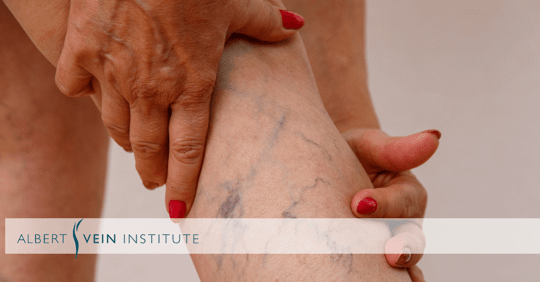Varicose veins are often seen as only a cosmetic issue. Many people wear socks, long pants, or other methods to cover, but do not treat this condition. Contrary to popular belief, varicose veins are not simply a cosmetic issue but present deep concerns for a person’s overall health. Many severe conditions are linked to varicose veins, and because of this, people need to know what can happen if they are left untreated.
An Issue Of Severity
For many, varicose veins begin as benign enlarged veins. While they may start like this, as they progress, they become more and more dangerous. Over time, they can start to cause aches and discomfort. Soon enough, they can cause severe and life-threatening conditions, such as deep vein thrombosis or post-thrombotic syndrome.
Deep-Vein Thrombosis
Deep-vein thrombosis occurs when a thrombus, also known as a blood clot, becomes lodged inside a vein. This can cause swelling, redness, soreness, and irritation. The danger comes when the thrombus becomes dislodged. The mass can travel around the body and into the lungs, where it can block blood flow and cause a pulmonary embolism. When a pulmonary embolism occurs, the body begins to lose the ability to oxygenate the blood. Some symptoms of a pulmonary embolism are coughing up blood, shortness of breath, and dizziness. If left untreated, a pulmonary embolism will kill. It’s essential to recognize the symptoms of deep-vein thrombosis so you can be on the lookout for it.
Signs and Symptoms
Blood clots can often have symptoms that mimic those of other severe conditions or not be symptomatic at all. Symptoms of Deep-Vein Thrombosis include:
- Swelling of the leg
- Changing skin color around the area where the clot is, particularly red or purple.
- Leg pain, soreness, and cramping beginning in the calf
- A warm feeling on the leg with the thrombus
When the thrombus dislodges and begins to block flow to the lungs, the symptoms become more severe. The symptoms of a pulmonary embolism include:
- Sudden shortness of breath
- Rapid pulse and breathing
- Coughing with blood in the mucus
- Chest pain that increases when breathing or coughing
- Lightheadedness and dizziness
- Fainting
For many, a pulmonary embolism can feel like a heart attack. It’s a sudden, acute pain in the chest, a feeling of intense pain. If left untreated, a pulmonary embolism is fatal.
Post-Thrombotic Syndrome
Another complication with deep-vein thrombosis is a post-thrombotic syndrome. The longer a thrombus remains in the vein, the more likely it is to develop. As the thrombus grows, it can damage the valves inside the arteries in your legs. This can cause blood to pool in these weakened valves, which causes pressure build-up due to the increased fluid, where there shouldn’t be any. Post-thrombotic syndrome can cause:
- Leg Ulcers
- Hardened Skin
- New varicose veins to form
- Pain that can last for extended periods of time
The post-thrombotic syndrome affects around ten percent of people who experience deep-vein thrombosis, so it’s essential to deal with what can cause these myriad medical issues: varicose veins.
Colorado Vein Specialists
At Albert Vein Institute, we specialize in dealing with problems relating to the veins. As the first distinguished IAC vein center with double accreditation, we work to meet our patients' needs. For those with varicose veins, we offer a range of treatments, both surgical and non-surgical. We walk you through every step of every procedure and do not recommend procedures or tests unless we feel that it is in your best interests. Our state-of-the-art varicose vein treatments can lead to shorter recovery times and improve the long-term results of our procedures. Contact us today. We offer next-day and same-week appointments for new patients.

